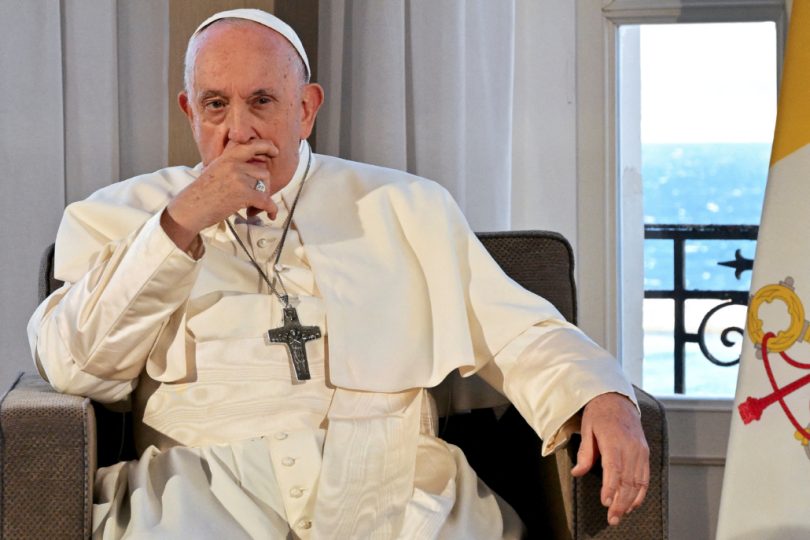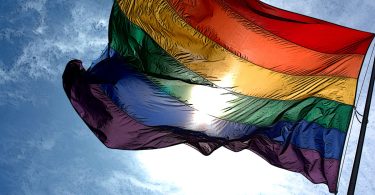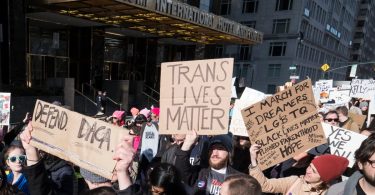Today’s post is from New Ways Ministry’s Senior Fellow, Brian Flanagan (he/him).
The declaration “Fiducia Supplicans: On the Pastoral Meaning of Blessings“ provides many reasons for rejoicing. Published just before Christmas, it takes a small yet important step toward a Church that is welcoming of Catholics in same-sex marriages and other so-called “irregular” situations. For LGBTQ+ Catholics, and others who have felt unwelcome in their own Church, it will certainly be of great comfort. This may be particularly true in spaces where LGBTQ+ persons do not have, or do not feel that they have, options for the affirmation of their relationships outside of the Catholic Church.
And yet since its publication, along with the rejoicing was an undercurrent of mild disappointment, or outright anger, among some LGBTQ+ Catholics about the smallness of this step. This opening towards greater welcome comes with a lot of restrictions. The document states the blessing must in no way resemble sacramental marriage, without “any clothing, gestures, or words that are proper to a wedding;” It also warns that “the form of [blessings] should not be fixed ritually by ecclesial authorities;” blessings may be offered spontaneously in response to the pastoral needs of a particular couple, but bishops and episcopal conferences should not develop standard forms for the blessing of same-sex couples comparable to those found in other churches. Clergy are to be “careful that [these blessings] should not become a liturgical or semi-liturgical act, similar to a sacrament.” For LGBTQ+ Catholics, this makes this document more ambiguous, especially while by comparison to fellow Catholics in heterosexual relationships eligible for sacramental marriage, even when they may sometimes also fail to live up to the full ideal of Catholic teaching on sexual activity.
Why would Pope Francis send such a mixed message?
To find an answer, we need to look at LGBTQ+ issues as not only an issue of moral theology or canon law, but also as an issue of ecclesiology: how does a church increasingly divided over issues of sexuality and gender identity maintain its unity?
Outside of the Catholic Church, we can see the recent challenges our siblings in the Anglican Communion and the United Methodist Church have faced while trying to maintain unity across different ideas about sexuality. The pope’s current method of navigating these tensions is to balance two of the primary aspects of papal ministry: maintaining the unity of the Catholic Church, while ensuring that all Catholics receive adequate pastoral care.
For my PhD in theology, I wrote about the thought of the late Fr. Jean-Marie Tillard, O.P., who studied the papacy as part of his work in ecumenical dialogue. Many acknowledge that he drafted major sections of Pope John Paul II’s 1995 encyclical on ecumenism Ut Unum Sint. Tillard argues that while the pope has an extensive job description like any bishop, the pontiff’s most distinctive role is the preservation of ecclesial unity. This task includes both maintaining the current church in communion with the tradition while also striving to maintain communion between contemporary Catholics in different geographical locations and cultural spaces. Tillard names the pope a “sentry for unity,” called to be on the lookout against anything that threatens the unity of Christ’s Church.
One major reason for the restrictions outlined in Fiducia Supplicans is the pope’s judgment that the actions of some bishops and churches who advocate for greater acceptance of same-sex relationships (as well as for divorced and re-married Catholics) threatens the unity of the church. For instance, the kind of standardized rituals that Fiducia Supplicans forbids are precisely the forms being considered by bishops in Germany and Belgium – and precisely the kind of unilateral step that would stretch to the limit, if not break, communion between the bishops in those countries and those in other parts of the world, like many in the United States.
The church’s lack of consensus regarding sexuality and gender identity was on display at last October’s General Assembly of the Synod on Synodality, when the participants could agree on what to say on many topics but not how to approach LGBTQ+ issues. Part of what the pope is doing, in this declaration and in his overall synodal approach, is to keep Catholics in conversation about these differences and to prevent a more dangerous and lasting schism in the church.
In putting the brakes on episcopal attempts to regularize same-sex relationships and in leaving Catholic teaching on sacramental marriage and the morality of same-sex sexual activity unchanged, the pope is exercising one of the major responsibilities of his role as universal pastor:to not let one part of the flock go so far in its own direction that it disconnects from the rest of the flock.
What is new and different in Pope Francis’s ministry is that this pontiff has not viewed preserving unity as only about preventing too much innovation, but also about preventing too much ecclesial stagnation in the face of new knowledge, new initiatives, and new possibilities yet to be discerned. The pope has not attempted to change church teaching regarding sexuality and gender identity, but he also has not attempted to stop the conversation happening throughout the church regarding LGBTQ+ issues.
In the Synod on Synodality’s logo, the bishop/pope figure is located, intentionally, at the center of the pilgrim people of God – not only keeping some Catholics from going too far ahead of the flock, but also drawing forward those Catholics who emphasize the security of past practice as a bulwark against the hazards of new pathways.
The synodal invitation to listen to and dialogue with other Catholics is another gentle form of guidance by which the pope is hoping to maintain the unity of the church in the midst of its divisions. As a “sentry for unity,” the pope must not only prevent some Catholics from moving away too quickly from other Catholics, but also to prevent any Catholics, including those most wary of ecclesial change and development, from being left behind.
All of this is guided, of course, not only or primarily by abstract ecclesiological theories, but by a second major aspect of papal ministry, which is to work for the pastoral care of all of the members of the Church. As New Ways Ministry’s Francis DeBernardo said in a recent essay in the National Catholic Reporter:
“The pontiff also recognizes that people are valuable in and of themselves, not in how well they adhere to church teaching. An individual’s relationship with God is a much more complex dynamic than how well one follows each and every rule in the church.”
We now live in a church where not only LGBTQ+ Catholics themselves, but also their families, pastors, bishops, friends, and critics are at the very beginning of a wider, more formal, and more open discussion about the meaning of sexuality and gender in our Christian lives. That dialogue is going to require patience from all sides.
The pope rightly recognizes that we cannot force conclusions to this new dialogue before it has reached a firmer, synodal consensus. And neither can the church wait until we all agree before we care for the actual people impacted by ecclesial decisions. In Fiducia Supplicans, the pope fulfills the onus of his ministry by making the needs of actual Catholics, and of actual couples in irregular situations of all sorts, at the center of the church’s response.
Some LGBTQ+ Catholics see this is as less than their hopes; some traditional Catholics worry about the potential consequences of this pastoral step. Given the ecclesial tensions in which the pope finds himself, and the Bishop of Rome’s dual role as a “sentry for unity” and a guarantor of pastoral care for all of the faithful, Fiducia Supplicans attempts to provide a way forward in the current messiness of our pilgrim church.
—Brian Flanagan (he/him), New Ways Ministry, January 8, 2024







